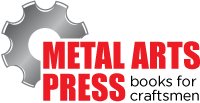- Acknowledgements
- Introduction
- Chapter 1: Measurement Tools, Layout & Job Planning
- Chapter 2: Basic Hand Tools
- Chapter 3: Filing & Sawing
- Chapter 4: Grinding, Reaming, Broaching & Lapping
- Chapter 5: Drills & Drilling Operations
- Chapter 6: Threads & Threading
- Chapter 7: Turning Operations
- Chapter 8: Milling Operations
- Chapter 9: Fastening Methods
- Chapter 10: Why Steel Hardens
- Chapter 11: Safety & Good Shop Practices
- Chapter 12: Other Shop Know-how
- Appendix I: Sharpening Steel Lathe Tools
- Appendix II: Surface Speed Table & Cutting Tool Selector Chart
- Appendix III: Decimal Equivalents of Fractional, Letter & Metric Drills
- Glossary
- Index
Introduction
Machine Shop Essentials covers the use of manually-controlled metal lathes, milling machines, and drill presses to make one-of-a kind parts, prototypes, and industrial models, and to modify and repair existing equipment.
Although NC machines dominate today’s production environment, manually controlled machine tools are indispensable to R&D labs, tool and die makers, industrial model makers, scientific instrument makers, prototype designers, auto racers, custom motorcycle and car builders, and gunsmiths.
When just a few parts or modifications are needed, manual machines can do the job faster than an expert can write the NC code. Also, manual machines are the best way to learn machine tool basics before going on to NC machines.
Every day valuable engineering developments are made by machinists who, using their ability to make and modify devices, turn a back-of-the-matchbook sketch into a practical and elegant working model. This back-to-basics book will help you accomplish this too.
Machine Shop Essentials includes:
A simple question-and-answer format.
Material divided into small, easy-to-understand blocks.
- Over 500 clear, concise drawings.
- Step-by-step instructions for common operations on the lathe, drill press, and milling machine, including typical problems and their solutions.
- Short cuts, specialized tools, and expert tips on indispensable shop-made tools that will quickly expand the user’s capabilities.
- The use of machine tool accessories to simplify making complex parts.
- Screw threads and non-threaded fasteners.
- How to incorporate purchased components such as bearings, gears, snap rings and roll pins to quickly make sophisticated and durable devices.
- How to heat-treat steel in the machine shop.
- A review of basic precision measuring and marking tools and methods.
- General safety issues and special precautions for each tool.
- Guidelines for avoiding metal fatigue failures.
- Cutting, drilling, and shaping plastic, rubber, and glass are also covered.
- Detailed instructions for frozen or broken tap and fastener removal and damaged thread repair methods.
Machine Shop Essentials is written for a machine shop equipped with a drill press, lathe, milling machine, vertical band saw, bench grinder, and disk grinder. Several hand-held power tools are also needed. They include a ⅜-inch variable-speed reversible electric drill, a die grinder, (Dremel®-type grinder, pencil-style electric- or air-driven die grinder) and a Sawzall®-type reciprocating saw.
This book does not cover commercial production where time, tooling, and material costs are paramount. These considerations are not important when making a prototype, model, or replacement part. For this reason the book covers carbide insert cutters and HSS toolbits, and does not go into cutting tools with exotic, wear-resistant coatings. These tools, though great for production, are rarely justified in the prototype shop.
| Huntington Beach, California January, 2008 |
Frank Marlow |

